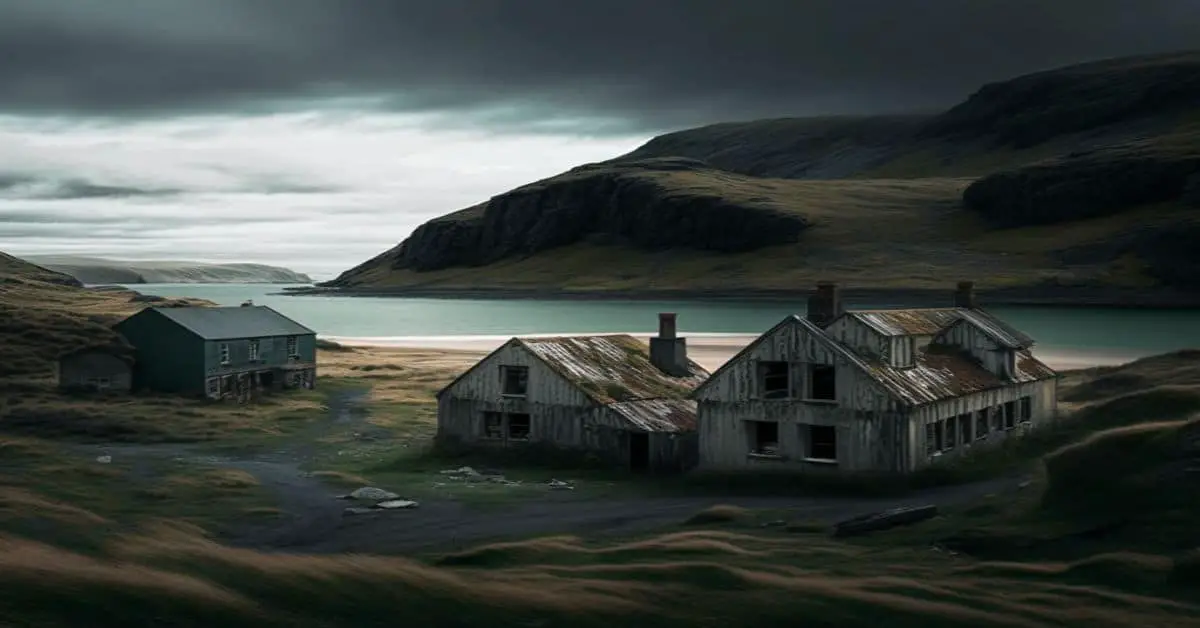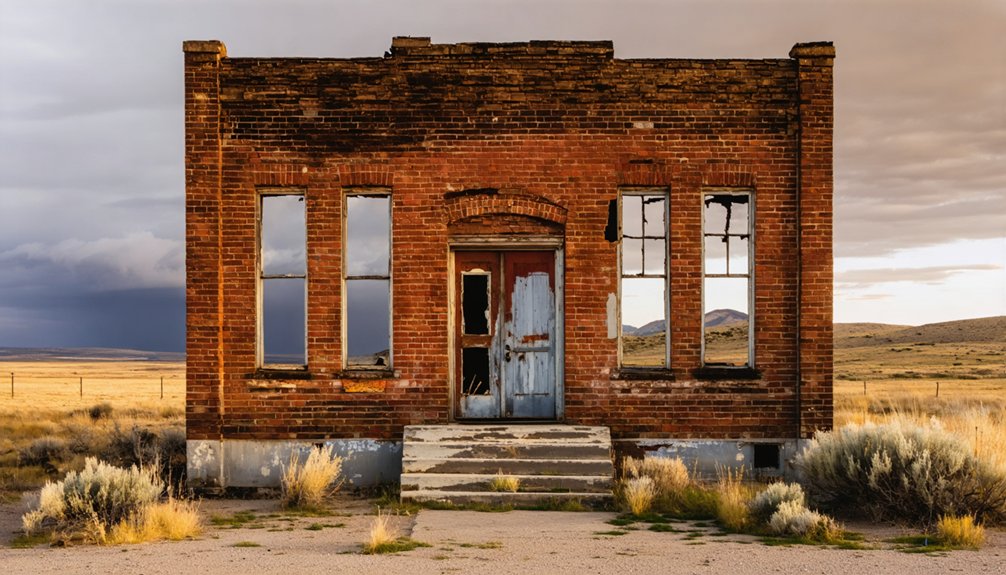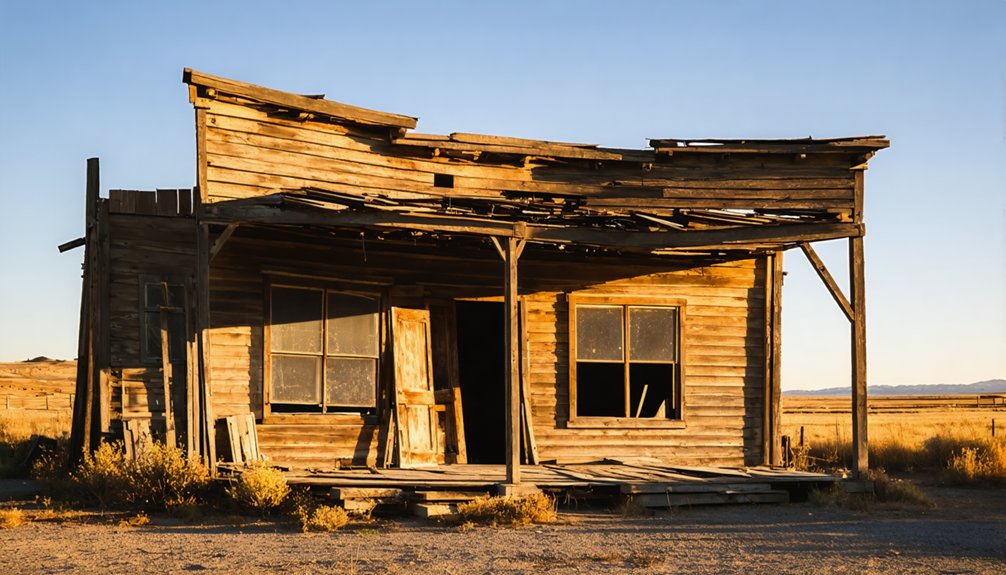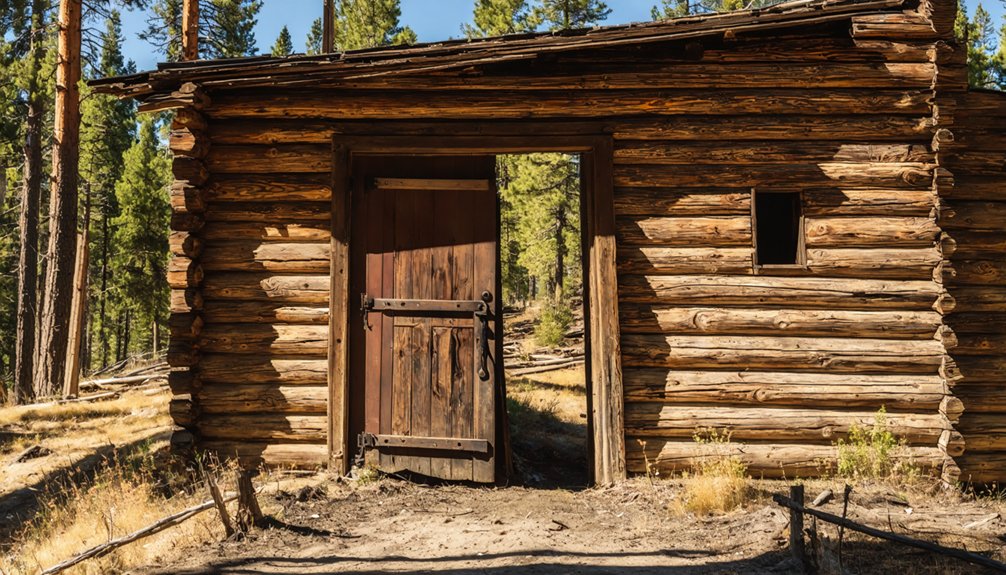Idaho joined the United States on July 3, 1890, as the 43rd state to join the union. Outside of potatoes, Idaho was a timber and mining hotspot in its early years. Settlers moved into the Idaho territory after gold was discovered in 1860.
There are over 100 ghost towns in Idaho. Until 1846, the territory that included present-day Idaho was claimed by both Britain and the United States. The Oregon Treaty gave land rights to the United States, and fourteen years later, in 1860, Franklin became the first permanent settlement just north of the Utah border.
Northern Idaho is the country’s top silver mining district and is prosperous in zinc, copper, and gold. The state is not known for diamonds. However, the largest diamond found in the United States was between McCall and New Meadows.
As new towns and settlements were built around mining and lumbering areas, others were deserted to become ghost towns, offering a glimpse into Idaho’s history.
Bayhorse, Idaho
Bayhorse started as a gold mining camp in Custer County in 1864. Gold veins were discovered in the area near the Salmon River. In the 1870s, a silver vein was found in the area to complement the gold veins, and the camp saw an increase in settlers. In 1877, Bayhorse was established as a town while The Beardsley and Ramshorn Mines grew in popularity.
An aerial tramway was constructed to transport gold and silver from the mines to wagons. The Gilmer and Salisbury Stamp Mill was erected on the mountainside and produced over $10,000,000 in gold, silver, and copper. Multiple charcoal kilns were also constructed to serve the mines. In 1880, a smelter was built that streamlined the Bayhorse mining process. At its highest, the town had around 300 residents.
Before being abandoned in 1915, Bayhorse was the longest-running silver producer in Idaho. After a fire destroyed part of the town and an unexpected water shortage created challenges, the residents began moving away to find other workable mines until the city was completely deserted.
The former town still has charcoal kilns, a few cabins, a saloon, and a cemetery, but it is vital to stay out of fenced-off areas due to possible toxins still being released from the mines.
The site is also known to have rattlesnakes, especially inside the kilns. 1976, the town and surrounding area were added to the National Register of Historic Places. In 2006, the state purchased the city and its property. In 2009, it was opened to the public as part of Yankee Fork State Park. Camping is available nearby at the Country Junction RV Park.
Burgdorf, Idaho
Located about 30 miles north-northeast of McCall in Idaho County is the former resort community of Burgdorf. The community was established as a resort around hot springs, which Chinese miners discovered. The area was believed sacred for Native Americans who once lived near it. In the late 1860s, Fred C. Burgdorf, a German immigrant, settled on the site. By 1870, Burgdorf turned the area into a hot spring resort.
A mining rush at nearby Thunder Gulch proved profitable for the hot spring resort between 1898 and 1902. Fred Burgdorf married a singer from Denver, Colorado, around this same time, and the newlyweds worked together to expand the resort following the Thunder Gulch rush.
While still using the name “Resort,” the area soon became known as Burgdorf to the locals and travelers. The unfortunate death of Burgdorf’s wife in 1923 altered any plans for the resort and the couple. Fred Burgdorf sold his interest in the property and moved to Weiser, Idaho.
The Burgdorf community post office remained operational until 1945, after the area had been mostly deserted. In 1972, Burgdorf was added as a historic district to the National Register of Historic Places, and a section of county road was developed in the 1980s to go through the hot springs property. At one time, the former NBA coach, George Karl, was part owner of the resort.
Under new management, Burgdorf still operates as a hot spring resort nestled in the Idaho mountains. Guest cabins are available to rent nightly, hot springs to soak and relax in, a small café style snack bar, a nearby tavern, and plenty of seasonal hiking, skiing, and snowmobiling in the winter. While limited amenities are available, traveling smart and bringing plenty of food, beverages, and personal necessities when visiting is encouraged.
De Lamar, Idaho
Sea captain Joseph De Lamar founded the town of De Lemar in 1888. Trading in his captain’s hat for a mining claim in Owyhee County, the former mining town of De Lamar had a brief but prosperous history. The town founder, Joseph De Lamar, was able to build the city with a mill, hotel, stores, housing, and a school, among other buildings. The available facilities encouraged miners to the area where silver had been found.
By the early 1890s, De Lamar’s residents started to relocate to more active mines, and as quickly as the population grew, it fell apart just the same. While in operation, the town produced over $8,000,000 in silver. Even with its secluded location and short length of activity, De Lamar was among Idaho’s top prosperous mining towns. The post office worked as a summer facility from 1917 to 1930.
There are still a few structures in the deserted town, but most were destroyed by fire or lost to natural elements. The roughly 1,600 acres of the city have been added to the National Register of Historic Places. To visit the area, be prepared for dirt roads, cliff sides, and rugged terrain. Winter traveling is not recommended due to significant snow levels, lack of amenities, and the risk of dangerous conditions.
Idaho City, Idaho
Idaho City is not a typical ghost town. It is more of a half-ghost town. Many of the original structures are still standing and in use. The city has a permanent year-round population, multiple restaurants and businesses are operational, and plenty of seasonal activities keep the town alive with visitors and tourists.
Before becoming Idaho City, the town was founded as Bannock in December 1862. The gold rush was full force during the Civil War, and Idaho was no stranger to gold mining. It has been said the area around Idaho City produced around $100,000,000 in gold, more than all the gold found in Alaska.
As the population grew, the town was renamed Idaho City to avoid confusion between Bannock in Boise County and the eastern Idaho town of Bannack in Beaverhead County.
By 1864, Idaho City had 7,000 residents, over 200 businesses, three dozen saloons, two dozen law offices, a Catholic church, and the first territorial jail in Idaho. In the Idaho mountains, wood was the primary source of housing materials and heat sources.
Unfortunately, wood as a building and heating source led to the city’s destruction by fire in 1865, 1867, 1868, and 1871. Buildings were still constructed and rebuilt from wood, but after each fire, more and more buildings began to use bricks in their design to withstand the risks of potential fires.
As mining production started to decline and operations began to slow down, residents would naturally move on to the next profitable mining town to find work. The large population of 1864 dropped to 900 by 1870 and further dropped to 104 by 1920. The 2010 census showed the population at 485.
Present-day Idaho City offers an accessible getaway to a quaint mining town. The Springs, a hot springs resort on the city’s outskirts, provides a beautiful location to soak in naturally warm water. Overnight accommodations can be made through the hot springs resort or the Idaho City Hotel. A post office, gas station, multiple eateries, a church, campgrounds nearby, and other facilities and businesses are ready to help explore the area.
Leesburg, Idaho
On July 16, 1866, gold was discovered south of the North Fork of the Salmon River. The Leesburg Mine had struck gold, literally and metaphorically. The town was primarily composed of soldiers from the Civil War, which is where its name originated. Wanting to honor General Lee, Leesburg was voted in.
In its heyday, the mining community had a population of around 7,000. Main Street was a mile long and was the site of many businesses. Over 400 miles of ditches were dug to carry water for sluicing gold. By 1930, hydraulic methods replaced most of the manual processes that were in place. Up to 1938, the mine produced around $16,000,000 in gold. By the time the mine ceased all operations, it is estimated the town made roughly $40,000,000.
The town was abandoned by the end of World War II. The residents left chose to leave to find more accessible communities to start a new life. 1975 the National Register of Historic Places added Leesburg to its registry. Not much is left of the once-thriving town. A few decaying structures and piles of boulders are all that remain as a reminder of the former mining town.
Placerville, Idaho
Placerville, located in Boise County, was once home to nearly 3,000 residents. Located 17 miles east of Horseshoe Bend, Idaho, the site of Placerville was chosen for the amount of placer gold found in the area. Placer mining was an essential part of the overall mining process in locating gold deposits.
Placerville was officially established on December 1, 1862, and only sixteen days later, six cabins were already set up, and placer mining operations were underway.
Six months after its start, the town had 300 structures and a population of 5,000. In January 1864, the first church service was held for the community. Following the Civil War, the peak years for mines in the Boise Basin were from 1863 to 1866.
Along with placer mining, quartz mining was gaining interest, too. Placerville had a second population boom during its peak time and further developed the site, providing thirteen saloons, seven restaurants, five butcher shops, five blacksmith shops, hotels, bakeries, livery barns, carpenters, sawmills, dressmakers for women, and even a street grid with a town square.
By 1870, a substantial portion of the population had relocated to other mines in the area as returns on smaller claims were falling short. Placerville saw signs of abandonment, with only 318 residents left.
Multiple fires had destroyed parts of the town throughout the years, but the fire in 1899 is the most memorable as it nearly destroyed the entire village. Working quickly, what was able to be rebuilt of the town was done, leaving the street grid currently used today.
In the 1970s, the town’s upper lots were auctioned off, and new homes for permanent and part-time residents were built. The Placerville Historic District was added to the National Register of Historic Places in 1984. Today, roughly 53 people call this town home. The town store is the only business that remains open.
Two other buildings that were once a mercantile and a saloon are now used as museums run on donations from visitors and tourists. The Placerville Fire Department is located near the city square. The Fourth of July is a great time to visit the town as fireworks light up the night sky from the town center. Be prepared for a crowd; it can be a popular attraction for those local to the valley.
Silver City, Idaho
Silver City is a remote mining town in Owyhee County near the southwestern Idaho/Oregon border. Founded in 1864, it mined gold and silver. At its height, the community had around 75 businesses and 2,500 people.
From 1867 to 1934, it was the county seat for Owyhee County. Silver City was the site of the first daily newspaper and telegraph office in Idaho. The town was also among the first in the state to receive electric power and telephone services.
Silver City was never entirely deserted, unlike other mining towns that became ghost towns after residents abandoned the sites. As the mines were emptied and the quartz and placer veins depleted in the 1890s, the town witnessed a slow decline in permanent residents. It was a slow decline that took some time before the city was left to less than one hundred people in the late 1950s to 1960s. Small-scale mining continued until World War II, with the Potossi mine being the last year-round mine to close.
Today, approximately 70 buildings remain standing. All the structures are privately owned, and many of the owners are third—and fourth-generation descendants of the miners who first settled the townsite.
The land Silver City was built on is currently owned by the federal government and maintained by the Bureau of Land Management. The Silver City Historic District was added to the National Register of Historic Places in 1972.
The Idaho Hotel was restored in 1972 and opened to tourists looking for overnight accommodations away from the nearby campground. During the summer months, the hotel uses propane refrigerators and operational stoves. Guest rooms have been updated with indoor plumbing and are furnished with Silver City antiques.
Due to its remote location in a narrow valley between the Owyhee Mountains and the rugged off-road terrain to reach its entrance, winter travel makes it inaccessible. Summer is the best time to plan a trip to this ghost town.
There are no fuel stations in Silver City or along the dirt road that leads the way, but there is a gas station along the main route before leaving the paved roadway. While the Idaho Hotel has guest accommodations, packing food, beverages, and necessities is highly encouraged before adventuring into the ghost town.



